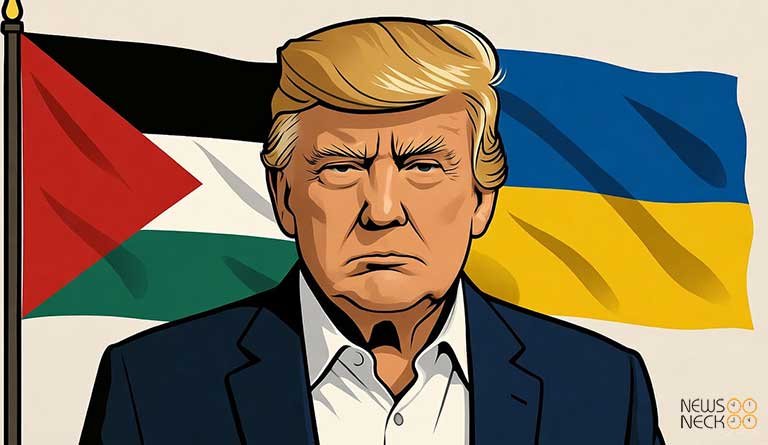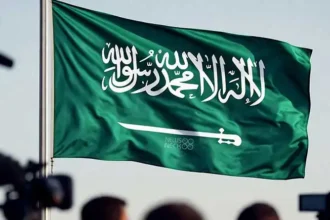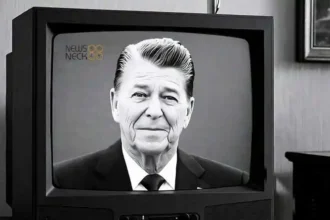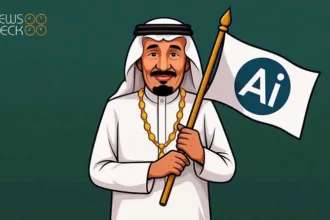The Test of a Dealmaker: Can Trump’s Momentum from Gaza Bring Peace to Ukraine?
There is a rhythm to how a president approaches the world. Sometimes it is with quiet diplomacy. Sometimes it is with bold threats. And sometimes, as with Donald Trump this week, it is with the confidence of a leader who believes he has just solved one intractable problem and is ready to tackle the next.
Fresh from brokering a ceasefire between Israel and Hamas, President Trump has now turned his full attention to the war in Ukraine, setting in motion a high-stakes diplomatic dance. The steps of this dance were on clear display over the past two days: a two-hour phone call with Russian President Vladimir Putin, followed by a meeting at the White House with Ukrainian President Volodymyr Zelensky.
The stage is set for a new Trump-Putin summit in Budapest, Hungary, potentially within the next two weeks. But behind the scenes of this peace push, a fundamental clash is unfolding. President Trump, energized by his success in the Middle East, is betting on his personal rapport with Putin to stop the fighting. President Zelensky, however, arrived in Washington with a different plea: to make peace through strength, he needs more powerful American weapons.
A Surprise Call and a Planned Summit
The diplomatic flurry began with a lengthy phone call between Trump and Putin. President Trump described the conversation as “very productive” and said “great progress” was made toward ending what he called the “inglorious” war. The most concrete outcome was the announcement of a forthcoming face-to-face meeting in Budapest, which would be Putin’s first trip to a European Union capital in years.
For Trump, this is a chance to build on the momentum from the Gaza ceasefire. He told Israeli lawmakers just days ago, “We have to get Russia done”. Yet, this approach carries a risk for Zelensky. The planned Trump-Putin summit, coming just before his own visit to the White House, threatened to sideline his position and reward the Russian leader with a high-profile meeting without Ukraine at the table.
The Ukrainian Request: Tools to Pressure Russia
While Trump speaks of summits, Zelensky speaks of missiles. The central focus of his White House meeting was a request for long-range Tomahawk cruise missiles. These weapons, with a range of up to 1,500 miles, could allow Ukraine to strike strategic targets deep inside Russia, fundamentally altering the cost of the war for the Kremlin.
Trump has openly used this possibility as leverage. He recounted joking with Putin, “Would you mind if I gave a couple of thousand Tomahawks to your opposition?” He added, “He didn’t like that idea”. For Zelensky, this is not a joke but a strategic necessity. He stated that the mere discussion of Tomahawks has Moscow “rushing” to renew dialogue, arguing that “the language of strength and justice” that worked in the Middle East can work against Russia, too.
This marks a notable shift in Trump’s approach. Since a summit with Putin in Alaska this summer failed to produce a peace deal, his administration has greenlit Ukrainian strikes on Russian energy infrastructure and increased intelligence sharing with Kyiv. The threat of sending Tomahawks is the most dramatic escalation of this new, more assertive posture.
You Might Like it: Trump Hails ‘New Dawn’ in Israel Peace Push 2025:
A Much Harder Path to Peace
Despite the momentum, experts warn that achieving peace in Ukraine will be a far more difficult task than the Gaza deal. The conflicts are fundamentally different.
Charles Kupchan on Foreign Relations explains that in the Middle East, “the war was almost over Trump had to get it across the finish line.” In Ukraine, however, the battlefield is largely frozen, with neither side having delivered a decisive blow. Furthermore, the U.S. has immense leverage over Israel as its main backer, a dynamic that does not exist with Russia, which has weathered Western sanctions by deepening ties with China and India.
As the table below illustrates, the two conflicts present very different challenges for a negotiator:
| Aspect of Conflict | Israel-Hamas War | Russia-Ukraine War |
|---|---|---|
| U.S. Leverage | Very high (Israel’s main military/diplomatic supporter) | Limited (Russia is an adversary, not an ally) |
| Battlefield Status | Nearing a natural conclusion | Effectively frozen in a stalemate |
| Key U.S. Tactic | Direct pressure on a dependent ally | Military and economic pressure on an adversarial state |
| Primary Goal | Ceasefire and hostage exchange | Resolution of territorial control and sovereignty |
Maria Snegovaya of the Center for Strategic and International Studies notes that Russia tends to end its wars only when its economy is in serious trouble. “I do not believe we are there at this point,” she said. This suggests that for Trump’s diplomacy to succeed, the threat of advanced weaponry like Tomahawks may need to become a reality to truly shift Putin’s calculations.
A Delicate Balance
As President Zelensky left Washington, the path forward remained uncertain. He hopes the “momentum” from the Middle East can be replicated, telling Trump that “Putin is certainly not braver than Hamas or any other terrorist”. Yet, Trump continues to pursue a “separate but equal” track of meetings with the two leaders, acknowledging their relationship is terrible.
The coming weeks will test whether Trump’s brand of personal diplomacy, backed by the threat of superior American firepower, can end a war that has ravaged Europe. The meeting in Budapest may bring a photo opportunity, but a lasting peace will require more than a handshake. It will require either a fundamental change in Moscow’s ambitions or a decision in Washington to provide Ukraine with the tools to force that change. For now, the dealmaker president has set the stage, but the final act of this tragedy has yet to be written.
Author: Yasir Khan
Date: 17 Oct, 2025
For More Updates, visit Newsneck













